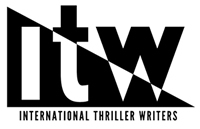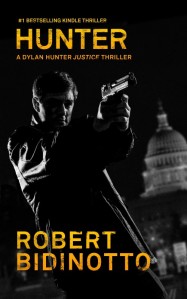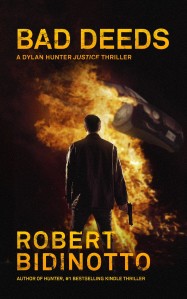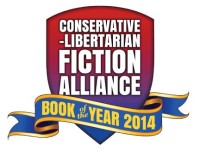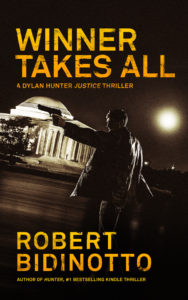There are many approaches to writing a novel, and no “one right way.” As I write my fourth novel, I thought I’d share my views about this topic, since many readers are curious about how writers do what they do.
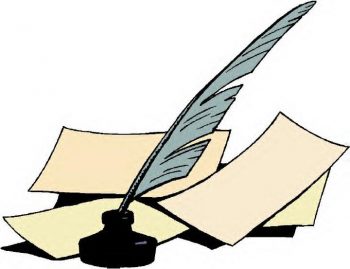 An author can start with something concrete and specific, such as an image of some character. Or of some setting. Or a line of dialogue. Or a news story. Or a conflict of some sort. Or he can start with an abstract theme. In eventually completing a story, the author will get around to incorporating a host of elements, both abstract and concrete — but mostly concretes that, taken together, will ideally add up to some theme, premise, “message,” or “moral.” But he can start the brainstorming process with any germinal seed — and then just keep asking himself questions about that story seed. Answering those questions will start fleshing out the tale.
An author can start with something concrete and specific, such as an image of some character. Or of some setting. Or a line of dialogue. Or a news story. Or a conflict of some sort. Or he can start with an abstract theme. In eventually completing a story, the author will get around to incorporating a host of elements, both abstract and concrete — but mostly concretes that, taken together, will ideally add up to some theme, premise, “message,” or “moral.” But he can start the brainstorming process with any germinal seed — and then just keep asking himself questions about that story seed. Answering those questions will start fleshing out the tale.
As far as a writing method: From the germinal seed idea, writers can proceed by seat-of-the-pants, exploratory drafting, just seeing where the idea may take them — or by a highly organized, detailed outline — or by all sorts of hybrid approaches. It doesn’t matter, as long as the outcome is a compelling, cohesive story. Stephen King and Lee Child are examples of authors who take the seat-of-the-pants approach (thus colloquially labeled “pantsers”); the late Robert Ludlum, Ken Follett, and Robert Crais are examples of those who take a meticulous, well-planned, “outliner” approach. Again, there’s no “one right way” to proceed.
Where a writer begins is likely to be affected by his experiences and interests. Stories can be character-driven, plot-driven, setting-driven, style-driven, or theme-driven. Speaking personally, because I’ve been interested in ideas all my life, I write theme-driven thrillers.

I am an “outliner” kind of writer, almost to an O.C.D. extreme. That method works well with my theme-driven approach. I start my Dylan Hunter vigilante tales with some abstract premise: philosophical, legal, moral, psychological, political. In doing this, I track closely with the method detailed by famed writing teacher Lajos Egri in his classic how-to book, The Art of Dramatic Writing.
I first settle on some abstract premise that interests me. Then I dream up a major character who embodies that premise. Next, I think of some character(s) who represent the antithesis of that character. Then I imagine diametrically opposing values held by these characters — and then specific, clashing goals that embody those values and put the characters into irreconcilable conflict. That conflict is the seed of the story’s drama. I build the plot on the development of that conflict, to its final climactic resolution. In plotting the story, I lean on the classic “three-act dramatic structure” as described in many books, such as those by James Scott Bell, Randy Ingermanson, and others. (You can search that term “three-act structure” online and get the gist of it.)
The good thing about writing theme-driven stories is that they are highly integrated: The author knows exactly where he is going, and every element of the story is connected to the thematic point. Another advantage — especially for “outliner” authors — is that this meticulously pre-planned approach considerably reduces the amount of rewriting or number of drafts that a “pantser” might require before he or she figures out exactly what they want to say and gets their story on track.

On the other hand, the danger in the theme-driven approach to fiction-writing is that Story can become subordinate to Message: The tale can become tedious, ham-handed propaganda, whose characters are one-dimensional messenger boys and girls — what I’ve described as mere “premises with feet,” instead of anything resembling actual people. Fiction readers want clever plots and strong characters in vividly realized settings; they don’t read novels for abstract moral instruction. So the theme-driven writer must resist the impulse to have his characters sitting around preaching the theme. He must show it, dramatize it in the events of the story, and in the lives of the characters.
Let me get specific, using my own thrillers as examples.
The first novel in my series, HUNTER, grew from my background writing investigative true-crime nonfiction in the 1980s and 1990s, and from my anger about the legal system. I wanted to write a highly suspenseful thriller about putting actual justice back into a criminal justice system that has been corrupted by liberal leniency toward predatory criminals. So, I conjured a mysterious vigilante who would expose that corruption — and then colorfully exact justice against both the predators and their “progressive” enablers. The abstract theme for HUNTER is summarized in a line of dialogue from its hero: “All that is necessary for the triumph of evil is an enabler.” The corresponding plotline, which dramatizes that theme, is: “An ex-CIA officer hiding under a new identity turns vigilante to punish murderers and their enablers, unaware that his lover is hunting the unknown assassin — or that she is the daughter of his arch-enemy.”
The Dylan Hunter sequel novel, BAD DEEDS, likewise grew from my past nonfiction writing and speaking — this time about environmentalism. In the form of a page-turning thriller, I wanted to expose the actual meaning of environmentalism as a philosophy, and the ugly, little-known truths about the organized environmentalist movement. So, my abstract theme is: “The environmentalist Narrative provides a philosophical rationalization for power-lust and plunder.” The dramatized plotline: “A crusading reporter turns vigilante to stop a deadly conspiracy of powerful politicians and environmentalist fanatics, even though his violent ways may cost him the woman he loves.” Again, the characters, their conflicts, plot events, and story climax all manifest and dramatize the book’s abstract theme.
The third novel in the series, WINNER TAKES ALL, is an even more ambitious thriller, both thematically and plot-wise. Here, I wanted to explore the psychology of power-lust: what I call the “win/lose,” as opposed to “win/win,” view of social relationships. I wanted to dramatize, in another page-turning Dylan Hunter thriller, how that zero-sum outlook on the world corrupts and destroys families, careers, sexual relationships, and of course our politics. This book’s highly abstract theme is: “The zero-sum worldview leads to and rationalizes predatory and exploitative ‘win/lose’ relationships.” However, it took a highly complex plot structure, and a big cast of colorful characters, to dramatize that theme fully, and in a gripping way. The following plotline summary doesn’t do justice to the tale and its characters: “A mysterious vigilante battles a ruthless billionaire, his hired assassin, and Russian spies who are using blackmail and terrorism to install their puppet in the White House.”
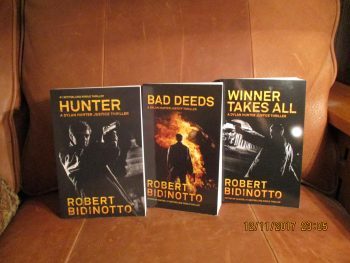
Anyway, I offer this commentary to provide a window into one author’s approach to writing fiction. Again, I want to emphasize that mine is not the only or necessarily the best approach. Each author must find an approach that works for him or her, compatible with their own psychology and interests. We only hope that at the end of our labors, our readers become mesmerized within our Story Worlds and can’t stop turning the pages.

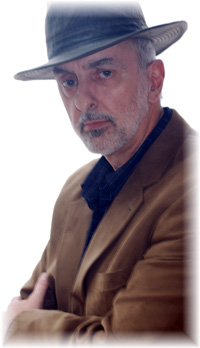 Photo (c) by Debbie Scott
Photo (c) by Debbie Scott
